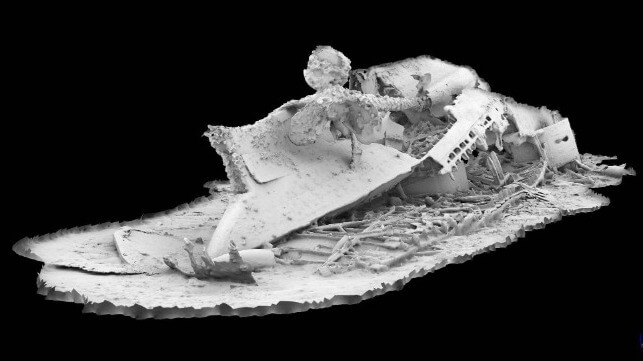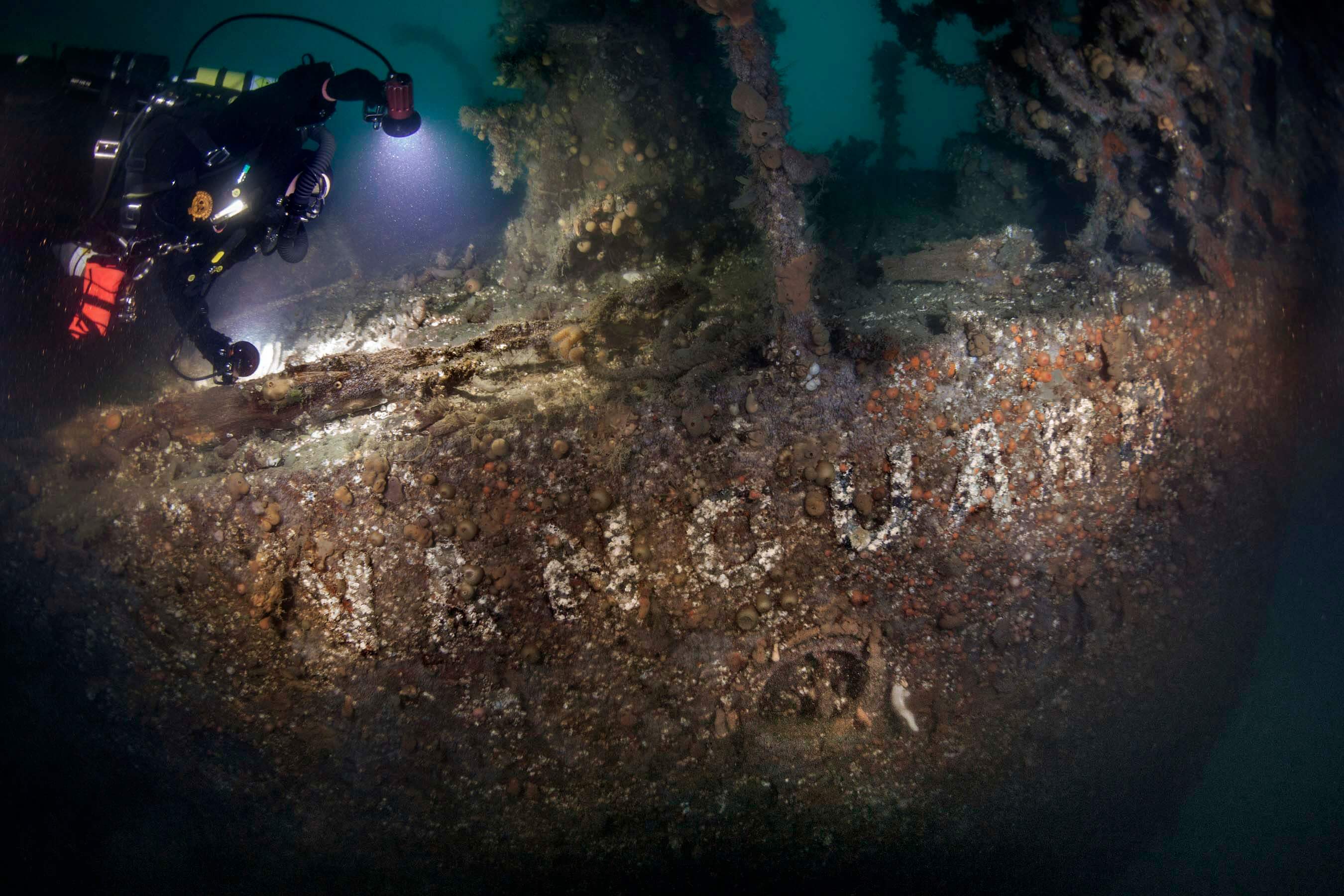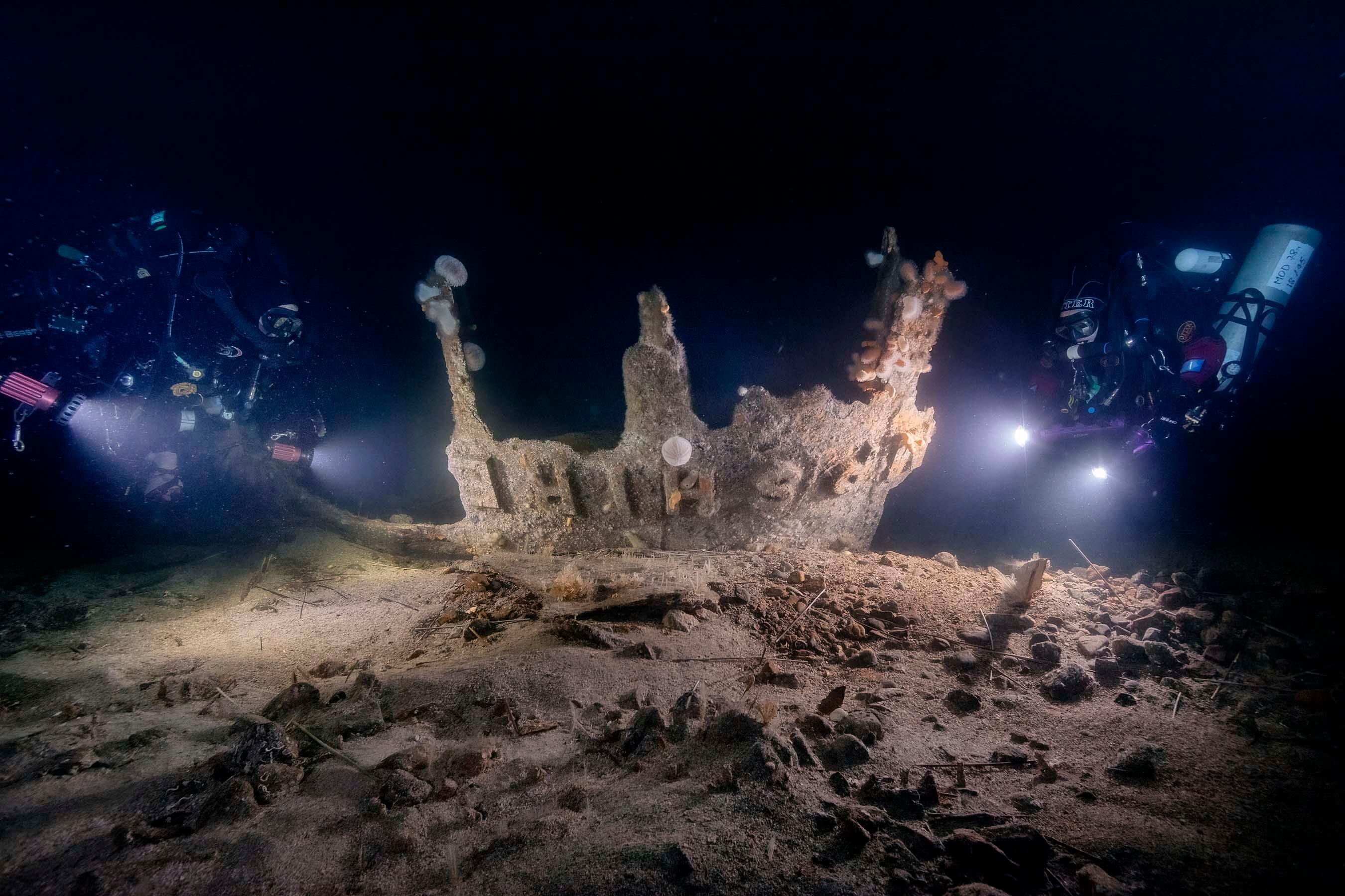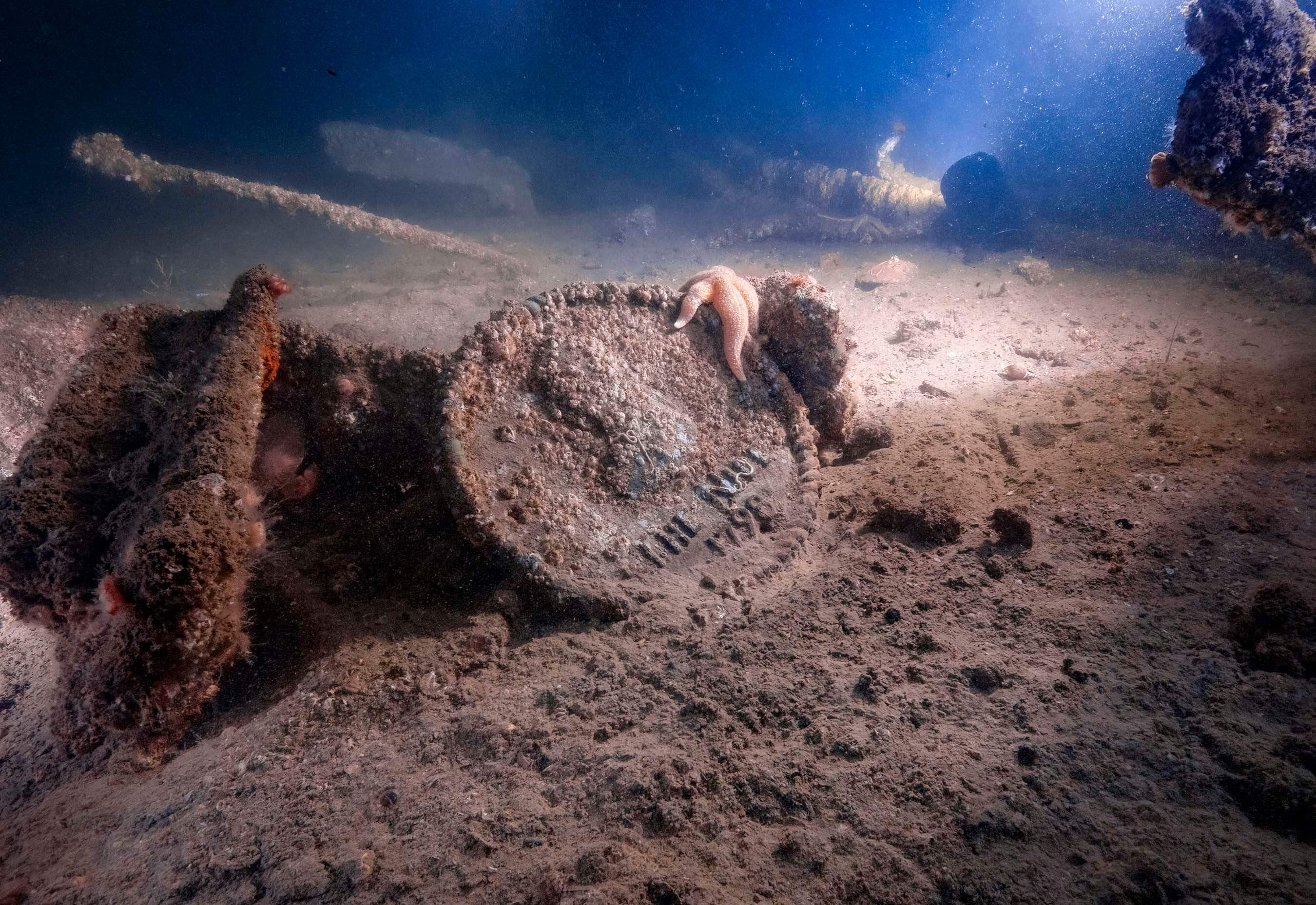Photos: Divers Document New Details of Two Famed Royal Navy Wrecks

This is the wreck of a Royal Navy warship whose loss shook the Fleet, nation – and Empire – to the core a century ago.
Divers working with the Scapa Flow Museum in Orkney took advantage of the exceptional weather to re-visit two of the islands’ most famous shipwrecks – and record them with the latest underwater cameras and technology. In doing so, they show the shattered stern of cruiser HMS Hampshire as no human eye can see her.
The ship was lost in just 15 minutes when it struck a German mine off Marwick Head on Orkney’s north-west coast on June 5, 1916. Just a dozen of the 749 souls aboard survived; among the dead was the man leading the nation’s war effort – War Minister Lord Kitchener. It had been the face of the field marshal calling Britons to arms in the famous propaganda poster. In 1916, he was probably as well known across the Empire as King George V.
His death – leading a delegation to Russia in support of the war against the Central Powers on the Eastern Front – came less than a week after the Royal Navy had failed to deliver a ‘second Trafalgar’ at Jutland. Together, the two events shook public and political confidence in the Senior Service.
Over a century later, the wreck has been partially salvaged with permission from the MOD – one of the cruiser’s propellers can be seen at Scapa Flow Museum.
The museum, which celebrates the role of the Royal Navy in Orkney – the vast natural harbor of Scapa Flow was its principal base through both world wars – intends to enhance digital 3D models of the two sunken titans based on the latest videos, still images and photogrammetric data collected.


 Underwater imagery courtesy of Marjo Tynkkynen
Underwater imagery courtesy of Marjo Tynkkynen
Local divers from Huskyan Charters received a diving license from the MOD - the firm regularly surveys Orkney wrecks and shares its findings with Whitehall - and carried out the latest studies “with great care and professionalism”, said Nick Hewitt, the Scapa Flow Museum’s Culture Team Manager.
“The end result will be an improved digital resource for visitors to the museum and one which helps tell the story of Orkney’s role in the world wars as the UK’s key naval base - and the immense losses borne out here," he said.
The museum, which is one of five shortlisted as the best of 2023, recently signed a deal with the National Museum of the Royal Navy to work together; the latter helped clear the way for the diving to take place over official war graves.
“The study of wrecks is important in understanding the events around their loss, which are sometimes obscure,” said the national museum’s Director General Professor Dominic Tweddle. “Orkney Islands Council does an exemplary job in protecting the many wrecks in their care and we are delighted to support them.”
Underwater imagery courtesy of Marjo Tynkkynen; Photogrammetry courtesy of Kari Hyttinen and Chris Rowland
This article appears courtesy of the Royal Navy and may be found in its original form here.
The opinions expressed herein are the author's and not necessarily those of The Maritime Executive.
No comments:
Post a Comment